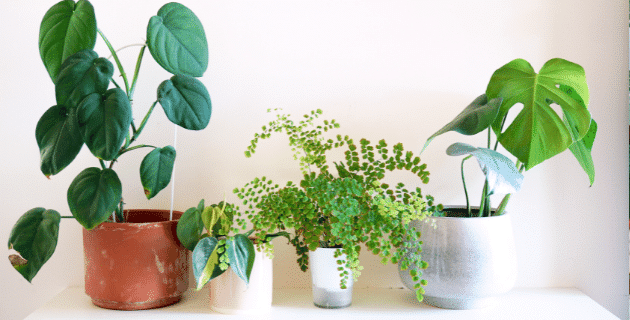
by California Casualty | Educators |
It’s the end of the year and you’re feeling burnt out. You have no motivation to teach. At this point, you may be numb and simply just going through the motions, day in and day out. There’s a name for what you’re feeling. It’s called languishing, and you’re not the only one feeling it…
What is ‘languishing’?
Languishing is the opposite of flourishing. It’s a combination of apathy, restlessness, and an overall lack of interest in things that ordinarily would bring you joy. Languishing is not a mental illness; it’s a mental state of low energy.
What causes languishing?
For many people, languishing was brought on by the uncertainty and isolation of the COVID-19 pandemic. It’s as if we’ve been on high alert for two years and we’re simply running out of mental energy. It’s a feeling not limited to teachers or to U.S. citizens. An international study
of nearly 10,000 people in 78 countries found at least 10 percent were languishing.
Are you languishing?
Maybe. See if you share any of these common signs and symptoms:
-
- Isolating yourself from friends and family
- Going through the motions
- Struggling with basic tasks
- A feeling of numbness
- A lack of self-worth
- A feeling of restlessness but not knowing what to do
- A tendency to miss work lately
If you are susceptible to anxiety and depression, you might be more prone to languishing.
Is languishing the same as depression?
No. Languishing and depression share many of the same characteristics but they are not the same. Depression is a mental illness. With depression, you may experience fatigue. You may sleep too much or too little, and have negative emotions and suicidal thoughts.
Languishing is not a mental illness; neither is it a description of mental health. It’s somewhere in between. With languishing, you experience negative emotions. You feel as if you’re not in control of your life. You may feel empty. For some people, languishing could be a risk factor for a mental illness like depression.
What can you do about languishing?
No one wants to feel empty and numb. It’s exhausting and not good for your quality of life. That’s why it’s important to recognize your feelings and do something about them. Fortunately, there are simple self-care strategies that you can take to recharge your emotional batteries and restore your spark. Here is a sampling.
-
- Take time off. You probably work a lot, after school, evenings and weekends. Give yourself a break. If you can’t take a couple of personal days, then at least give yourself weekends off. Take the time to recharge so that you can come back reenergized.
-
- Find your happy place. Spend time doing what makes you happy, not what should make you happy. Carve out some time each week for a favorite hobby, a coffee date with a dear friend, or simply some precious alone time with a favorite book. Choose something that you look forward to doing, and that will be the right thing for you.
-
- Practice self-care. Eat well. Get enough sleep. Taking care of your body will help put you in the right place to support your mental wellbeing.
-
- Change your scenery. Take a walk in the park. Stroll along a body of water. Find a quiet place to enjoy nature. Just getting away from your normal daily scene can do wonders to perk up your thoughts. Bring a friend and you can enjoy wonderful social connections, too.
-
- Perform acts of kindness. Make someone a cup of coffee. Help a work colleague. Pay the toll for a stranger. Volunteer in your community. The simple act of doing things for others will boost your spirits.
-
- Practice gratitude. Remember that you have a lot for which you are thankful. Make a list. Include your thanks for the physical, emotional, and spiritual parts of your life. Do this daily, and you’ll start to see a difference in how you view your life.
-
- Try something new. Get yourself out of the languishing rut by working on a new skill. Seek out a new interest. Invite a friend to join you, and you’ll get the added bonus of time spent together.
-
- Consult a therapist. If you cannot shake the feeling of languishing on your own, ask for help. A licensed therapist is there to help you navigate through this mental state and emerge on the other side more confident, energized, and in the perfect mindset to flourish.
It may be hard to push through right now, but the end of the school year is in sight. And if there is anything we have learned over the past two years, it’s that teachers can do anything they set their minds to. Go on! You’ve got this!
This article is furnished by California Casualty, providing auto and home insurance to educators, law enforcement officers, firefighters, and nurses. Get a quote at 1.866.704.8614 or www.calcas.com.

by California Casualty | Homeowners Insurance Info |
Is there anything better than knowing your vacation is near? You’ve taken off work and you’re busy planning and packing. But while you’re focused on your destination, don’t forget that you’ll also be leaving your home unattended.
Whether you’re heading out of town for two days or two weeks, take the time to prepare your house and property so there will be no unfortunate surprises (or visitors) while you’re away.
Make your home looks lived-in.
Savvy thieves look for signs that you are away, such as an overgrown lawn, a pile-up of mail or packages, or an empty driveway. A well-maintained home and property reinforce the fact that people are living here, and most likely at home.
-
- Mow and edge your lawn before you leave. Trim your bushes, especially around windows and close to your house.
- Pick up any debris and any personal items in your front or backyard.
- Stop your mail and newspapers, and arrange for a neighbor to pick up any packages.
- Leave a car parked in your driveway or ask a neighbor to park in front of your house.
- Invest in an inexpensive light timer to turn the lights on and off while you’re away.
Secure your home and property.
There’s a lot more than simply locking the doors that goes into securing your home and property. You want to make it unlikely that a thief would target your home, and also protect its contents should a neighborhood fire or disaster occur.
-
- A security system can help protect your property and also reduce the cost of your home insurance policy.
- Consider a motion-sensor floodlight, which can help to deter trespassers.
- Make sure your important papers are in a fireproof container or safe.
- Leave an emergency contact number and a spare key with a trusted neighbor. (Don’t hide your key in a rock. That’s the first place a thief will look.)
- Don’t advertise that you are going away on social media. Wait until you return home to post photos.
Clean thoroughly.
Coming home to a dirty house is no fun. Neither is being greeted by week-old smells of stinky garbage. Take the time to clean up before you leave so everything is fresh and ready for your return.
-
- Give your house an overall cleaning.
- Empty the refrigerator of perishable items.
- Empty all of the trashcans, especially the kitchen trash, right before you leave. Ask your neighbor to put out your trash cans on the next trash day.
- Run your garbage disposal with half a cup of vinegar and some water.
- Do the laundry and change the sheets.
Make plans for your pets and your plants.
It goes without saying that you won’t leave your pets or plants unattended if you’re going to be away.
-
- Depending on the type of pet, you may need a pet sitter or boarding facility. Make those plans well in advance of your trip.
- If you’re leaving pets at home, make arrangements for someone to check on them. You will provide them with food and water of course. But even low-maintenance animals can get accidentally trapped in spaces or encounter other mischief.
- Ask a neighbor to water your plants at your home or theirs. If you dole out your plants to multiple neighbors, make a list of plants and locations so you know who has what.
Put your systems in vacation mode.
If no one will be living in your house, why pay for gas, electric or water? It’s a good time to save energy by shutting down the home systems that you don’t need, taking into account if there are any pets or plants that will need them.
-
- Put your water heater in vacation mode. It’s a setting that allows your water heater to run your boiler at a lower temperature than normal.
- Turn off the water valves to the dishwasher, washing machine and all sinks, if no one is going to be using them (such as a neighbor watering plants).
- Set your thermostat to a temperature closer to the outside temperature. Just remember to adjust it for pets and plants as needed.
- Change the batteries in your smoke detectors if you have not recently done so.
Do a final check the day you leave.
There’s a lot to think about as you’re leaving for vacation, and likely your mind is more focused on the trip ahead than what’s happening at home. This is where a final “to do” list and check-in helps. Plan to do these things on the day you leave.
-
- Unplug and shut off appliances not in use. Not only does this save on your electric bills, it protects items from power surges.
- Close all doors and windows. Close the curtains and blinds.
- Leave on a light or two on or set a lamp timer.
- Set the thermostat appropriately.
- Check the washer. The last thing you want is old (and smelly) wet laundry to greet you when you return.
- Make sure your oven is off. Make sure your iron is off.
- Pro tip: Take pictures of items you’re worried about, such as oven knobs to show they’re off. That way, you can check back if you’re concerned about them.
Check-in while you’re away.
You may be out of town, but you’ve got great ways to check in to see what’s happening in the neighborhood.
-
- Subscribe to a local app such as NextDoor.
- Look at online footage from your home’s security camera.
- Text or call a neighbor to check in.
You also may consider hiring a house sitter so that you don’t have to worry about what’s happening at home. If you do choose that route, make sure that the person is a reputable one. Establish a set of rules, so it is clear what your house sitter can and cannot do (for example: can watch Netflix; can’t have parties).
Don’t forget to thank the neighbors who helped you. Bring them a souvenir or small gift from your vacation or get them a gift card for a dinner out.
Finally, know that your home and property are protected by homeowner’s insurance. Should anything happen while you’re gone, your policy helps provide that peace of mind.
Have a great trip.
This article is furnished by California Casualty, providing auto and home insurance to educators, law enforcement officers, firefighters, and nurses. Get a quote at 1.866.704.8614 or www.calcas.com.

by California Casualty | Homeowners Insurance Info, Pets, Safety |
It’s a well-known fact that plants produce oxygen. But did you know that some plants also “clean” the air that we breathe? It’s true. These plants can remove harmful chemicals, from paint fumes to furniture polish. This can help reduce respiratory problems, allergy symptoms, and headaches. But it’s important to note, that not all plants do this. And some that do are not safe for pets and young children, because they are considered toxic if consumed.
If you’re thinking about adding some house plants that promote indoor air quality, and are also good for pets and your youngsters, here are some great options to add some safe greenery to your space.
Why are chemicals in my air, anyway?
You don’t have to live in a chemical plant to be exposed to VOCs, volatile organic compounds. VOCs are emitted as gases from certain things that are common in our homes. Cleaning products, paints, cosmetics, printer ink, and even building materials can create these pollutants.
The NASA Clean Air Study and other studies looked at different plants’ effects on reducing VOCs. We culled the list to include those plants that were safe for pets, too.
8 Safe Indoor Plants
1. Spider Plant (scientific name: Chlorophytum comosum)

Named for the long leaves that resemble a spider’s legs, these plants remove formaldehyde, xylene, and toluene from the air. These chemicals are found in household products such as glue, paint, lacquer, nail polish, and stain removers. Formaldehyde also is in some cosmetics, dishwashing liquids, building materials, and insulation.
Spider plants are great plants for beginning gardeners. They are easy to grow; you can even start them from cuttings. They just need water and bright indirect light.
Pro tip: A spider plant’s dangling leaves may attract curious kittens. Make sure your plant is in a safe place where your cat cannot knock it over.
2. Money Plant (scientific name: Epipremnum aureum)

This plant is named for its round, flat leaves that, with a little imagination, resemble coins. According to tradition, these plants are supposed to bring luck. Money plants are lucky in other ways; they soak up toxins in the air like formaldehyde.
This plant likes bright indirect light. It’s also a great plant for beginners. You can grow it in water or soil.
3. Areca Palm (scientific name: Chrysalidocarpus lutescens)

This is a big, bold plant that commands attention with its feathery, arching fronds. It naturally purifies the air by absorbing formaldehyde, xylene, and toluene, pollutants found in many common household products.
Make sure you have enough space if you’re growing it indoors. It can grow as tall as six or seven feet. An Areca Palm needs indirect sunlight and enough water to keep it moist. Because it grows big, your Areca Palm will need repotting every couple of years.
4. Boston Fern/Sword Fern (scientific name: Nephrolepis exaltata)

Fondly known as a living humidifier, the Boston Fern loves humidity. It will naturally put moisture back into the air and is great for sinuses and allergies. It also is an air-purifying superstar. It absorbs formaldehyde, xylene, and toluene, pollutants found in many household products.
Boston Ferns do need indirect sunlight in a spot that isn’t too warm, and regular watering to keep the soil damp. Since they love humidity, Boston Ferns do well in bathrooms and kitchens.
5. Wax Plant (scientific name: Hoya Carnosa)

This low-maintenance plant is named for its green waxy leaves, and it produces clusters of tiny starry flowers. The Wax Plant is great for anyone frequently exposed to chemicals found in paint, gasoline, or smog. It absorbs VOCs like benzene.
It’s a tropical plant that thrives in bright indirect light and high humidity. It’s easy to grow a Wax Plant from cuttings. Place them in a water jug for 2-3 months until the roots are well developed, before planting.
6. Moth Orchids (scientific name: Phalaenopsis)

These colorful, long-lasting flowers look exotic but actually are very hardy. Their flowers resemble moths in flight, which was the inspiration for their name. These beautiful plants are great at absorbing paint fumes.
Interestingly, Moth Orchids get their nutrients from the air. You may see them grow roots above the soil. Don’t cut them off as the plant needs them to thrive. Moth Orchids need indirect sunlight and prefer higher temperatures and humidity.
7. Barberton Daisy (scientific name: Gerbera jamesonii)

While the Barberton Daisy comes in traditional white, it also blooms in yellow, orange, red, and pink. Its bright colors make it a favorite house plant. The fact that it also filters out benzene, formaldehyde, and trichloroethylene is a bonus! These chemicals are found in adhesives, cleaning fluids for rugs, paint removers, spot removers, and typewriter correction fluids.
Indoors, they can flower any time of the year. They love direct sunlight and moist soil. They usually last for a single growing season but your Barberton Daisy can last for two to three years with good care.
8. Purple Waffle Plant (scientific name: Hemigraphis alternata)

Also called Red Ivy, the Purple Waffle Plant has beautiful gray-green leaves with purple undersides. Its coloring makes it a popular plant for homes and offices. An added bonus is that Purple Waffle Plants are very good at removing VOCs such as benzene, toluene, and octane. These are common pollutants found in paint, cleaners, hair spray, and more.
This plant likes medium to bright light indoors. It thrives in moist soil. Purple Waffle Plants will produce white flowers in the summertime.
What to Do If Your Fur Baby Eats a Toxic Plant
While the plants on this list are safe for pets, not all plants are. If your fur baby ingests any part of a toxic plant, call your veterinarian immediately. You may be asked to bring your pet in for treatment. For emergencies like this, pet insurance can help. Find out more about what pet insurance can cover by talking with a California Casualty customer service representative.
This article is furnished by California Casualty, providing auto and home insurance to educators, law enforcement officers, firefighters, and nurses. Get a quote at 1.866.704.8614 or www.calcas.com.













